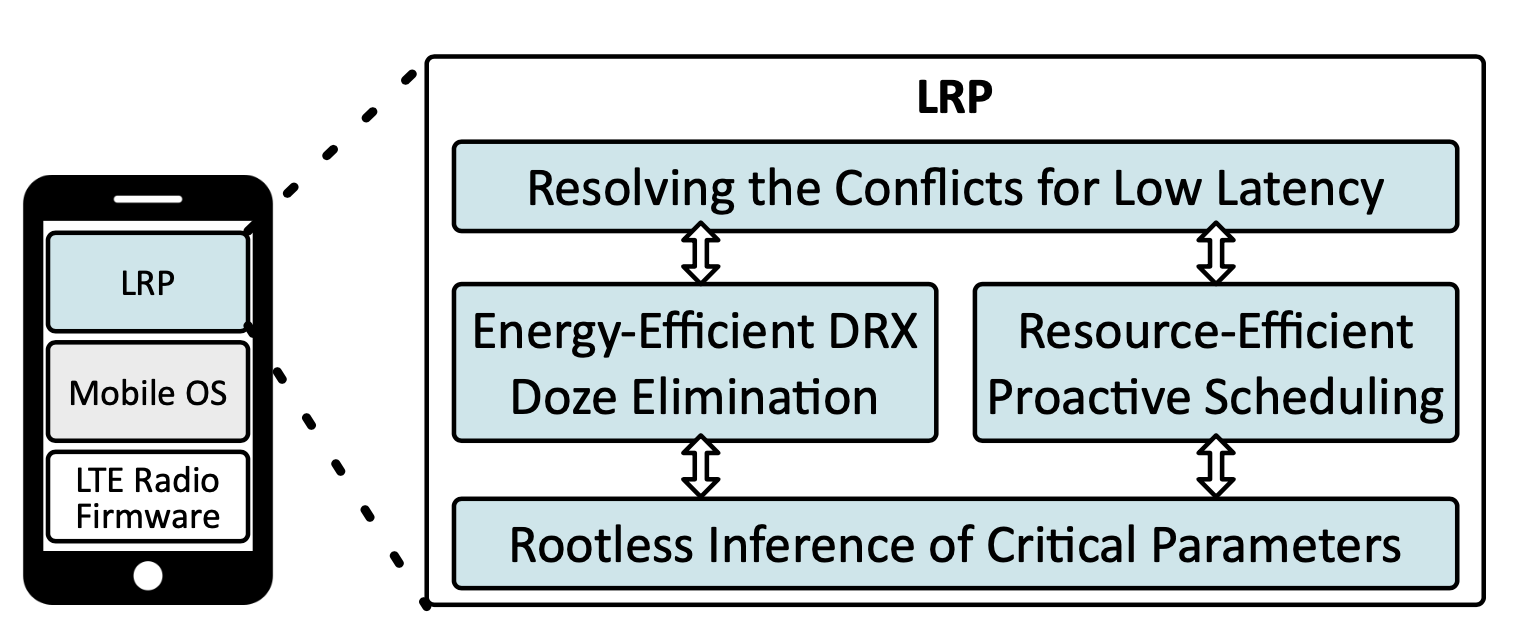LRP
Reducing mobile network latency at the application layer
Problem
Low latency is critical to the proper functioning of various delay-sensitive mobile applications, such as mobile VR/AR, mobile gaming, mobile sensing, mobile machine learning, and emerging robot/drone-based image/speech recognition. These applications typically run on 4G LTE and 5G mobile networks, which offer ubiquitous access and seamless service. They differentiate themselves for their heavier uplink data transfer (e.g., user motion control, sensory data, and live camera streaming) from the device to the infrastructure. In this work, we study how to reduce network latency over LTE networks for such applications in the connected state.

Approach
The overall design of LRP takes the data-driven approach. Our experiments first reveal that, uplink latency contributes to a large portion of overall latency in tested apps over operational LTE. While the downlink transfer has been extensively optimized, the uplink data transfer is less studied. We analyze and quantify the detailed LTE latency elements in uplink via two popular applications. Based on the gained insights, we design LRP.
Design

LRP designates small dummy messages, which precede those uplink data packet transfers. It thus eliminates the latency elements due to power-saving and scheduling. LRP performs proper timing control among dummy messages and data packet streams. To reduce the overall latency, LRP further resolves the conflict that arises among dummy messages, and avoids the conflict between data packets and dummy messages. To make this conceptually simple idea work, LRP infers critical LTE parameters at the application layer, and performs proper timing control among dummy messages and data packet streams. All these solution components work at the application layer without root privilege, thus available for every off-the-shelf commodity mobile device. While LRP is mainly designed in 4G LTE, it can be readily generalized to benefit the emergent 5G. We analyze the data and energy overhead incurred by LRP.
Outcome
We implement LRP on commodity Android phones. We test LRP under 375 unique cells from 5 different operators. The experiments cover different mobility and signal conditions. In our evaluation, LRP reduces the median LTE uplink latency by up to 7.4×. The latency reduction in 5G achieves comparable results. It ensures that the network latency for data transfer is no worse than the legacy LTE design. The incurred energy and data volume overhead is negligible.
Publications
| Device-Based LTE Latency Reduction at the Application Layer Zhaowei Tan, Jinghao Zhao, Yuanjie Li, Yifei Xu and Songwu Lu, |
Demos
LRP DemoTeam Members
- Zhaowei Tan (University of California, Los Angeles)
- Jinghao Zhao (University of California, Los Angeles)
- Yuanjie Li (Tsinghua university, Beijing)
- Yifei Xu (Peking university, Beijing)
- Songwu Lu (University of California, Los Angeles)
Code Release
DownloadResearch Support
We gratefully acknowledge research support from the departmental support of UCLA.
